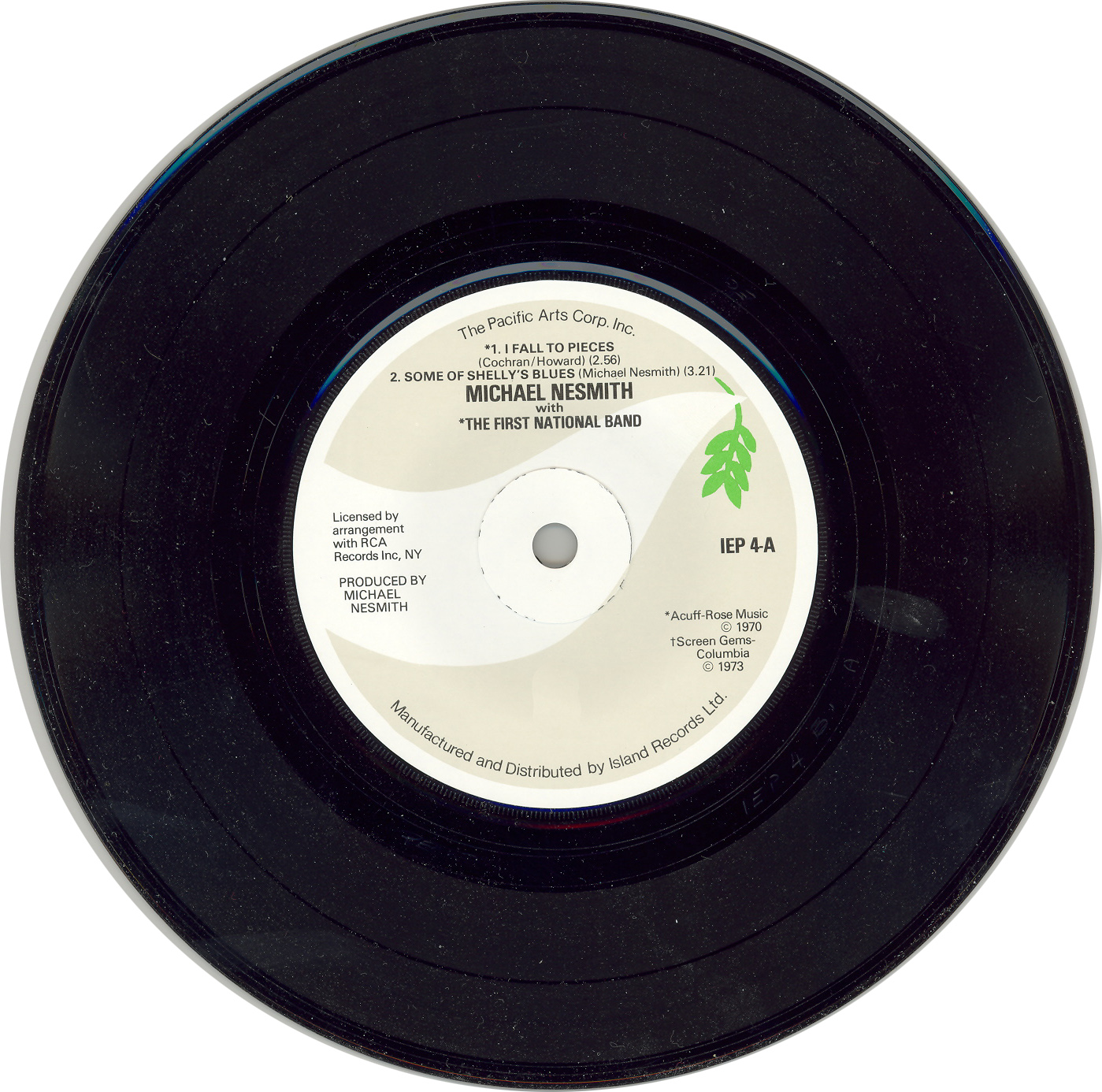|
Dots And Loops
''Dots and Loops'' is the fifth studio album by English-French rock band Stereolab. It was released on 22 September 1997 and was issued by Duophonic Records and Elektra Records. The band co-produced the album with John McEntire and Andi Toma, and recording took place at their respective studios in Chicago and Düsseldorf. It was their first album to be recorded straight to Digital Audio Tape and produced with Pro Tools. The album explores jazz and electronic sounds, and is influenced by bossa nova and 1960s pop music. Its lyrics address matters such as consumerism, the "spectacle", materialism, and human interaction. ''Dots and Loops'' reached number 19 on the UK Albums Chart, as well as number 111 on the ''Billboard'' 200 chart in the United States. The track " Miss Modular" was issued as a single and as an EP, and peaked at number 60 on the UK Singles Chart. Several music critics have praised ''Dots and Loops'' for its blend of accessible music with experimental and avant-g ... [...More Info...] [...Related Items...] OR: [Wikipedia] [Google] [Baidu] |
Stereolab
Stereolab are an English people, Anglo-French avant-pop band formed in London in 1990. Led by the songwriting team of Tim Gane and Lætitia Sadier, the group's sound incorporates repetitive motorik beats with the use of vintage electronic keyboards and female vocals sung in English and French, drawing influences from krautrock, funk, jazz, 1960s Yé-yé, French pop and Brazilian music. Their lyrics have political and philosophical themes influenced by the Surrealist and Situationist International, Situationist art movements. Stereolab were formed by Gane (guitar and keyboards) and Sadier (vocals, keyboards and guitar) after the break-up of McCarthy (band), McCarthy. The two were romantically involved for fourteen years and are the group's only consistent members. Other longtime members included 1992 addition Mary Hansen (backing vocals, keyboards and guitar), who died in 2002, and 1993 addition Andy Ramsay (drums). The High Llamas' leader Sean O'Hagan (guitar and keyboards) was ... [...More Info...] [...Related Items...] OR: [Wikipedia] [Google] [Baidu] |
Digital Audio Tape
Digital Audio Tape (DAT or R-DAT) is a signal recording and playback medium developed by Sony and introduced in 1987. In appearance it is similar to a Compact Cassette, using 3.81 mm / 0.15" (commonly referred to as 4 mm) magnetic tape enclosed in a protective shell, but is roughly half the size at 73 mm × 54 mm × 10.5 mm. The recording is digital rather than analog. DAT can record at sampling rates equal to, as well as higher and lower than a CD (44.1, 48, or 32 kHz sampling rate respectively) at 16 bits quantization. If a comparable digital source is copied without returning to the analogue domain, then the DAT will produce an exact clone, unlike other digital media such as Digital Compact Cassette or non- Hi-MD MiniDisc, both of which use a lossy data-reduction system. Like most formats of videocassette, a DAT cassette may only be recorded and played in one direction, unlike an analog compact audio cassette, although many DAT recorders had ... [...More Info...] [...Related Items...] OR: [Wikipedia] [Google] [Baidu] |
Extended Play
An extended play (EP) is a Sound recording and reproduction, musical recording that contains more tracks than a Single (music), single but fewer than an album. Contemporary EPs generally contain up to eight tracks and have a playing time of 15 to 30 minutes. An EP is usually less cohesive than an album and more "non-committal". An extended play (EP) originally referred to a specific type of 45 revolutions per minute, rpm phonograph record other than 78 rpm standard play (SP) and 33 rpm LP record, long play (LP), but , also applies to mid-length Compact disc, CDs and Music download, downloads. EPs are considered "less expensive and less time-consuming" for an artist to produce than an album, and have long been popular with punk and indie bands. In K-pop and J-pop, they are usually referred to as Mini-LP, mini-albums. Background History EPs were released in various sizes in different eras. The earliest multi-track records, issued around 1919 by Grey Gull Records, were Vertic ... [...More Info...] [...Related Items...] OR: [Wikipedia] [Google] [Baidu] |
Billboard 200
The ''Billboard'' 200 is a record chart ranking the 200 most popular music albums and EPs in the United States. It is published weekly by '' Billboard'' magazine to convey the popularity of an artist or groups of artists. Sometimes, a recording act is remembered for its " number ones" that outperformed all other albums during at least one week. The chart grew from a weekly top 10 list in 1956 to become a top 200 list in May 1967, acquiring its existing name in March 1992. Its previous names include the ''Billboard'' Top LPs (1961–1972), ''Billboard'' Top LPs & Tape (1972–1984), ''Billboard'' Top 200 Albums (1984–1985), ''Billboard'' Top Pop Albums (1985–1991), and ''Billboard'' 200 Top Albums (1991–1992). The chart is based mostly on sales—both at retail and digital – of albums in the United States. The weekly sales period was Monday to Sunday when Nielsen started tracking sales in 1991, but since July 2015, the tracking week begins on Friday (to coincide ... [...More Info...] [...Related Items...] OR: [Wikipedia] [Google] [Baidu] |
UK Albums Chart
The Official Albums Chart is the United Kingdom's industry-recognised national record chart for album, albums. Entries are ranked by sales and audio streaming. It was published for the first time on 22 July 1956 and is compiled every week by the Official Charts Company (OCC) on Fridays (previously Sundays). It is broadcast on BBC Radio 1 (top 5) and found on the OCC website as a Top 100 or on ''UKChartsPlus'' as a Top 200, with positions continuing until all sales have been tracked in data only available to industry insiders. However, even though number 100 was classed as a hit album (as in the case of ''The Guinness Book of British Hit Albums'') in the 1980s until January 1989, since the compilations were removed, this definition was changed to Top 75 with follow-up books such as ''The Virgin Book of British Hit Albums'' only including this data. As of 2021, Since 1983, the OCC generally provides a public charts for hits and weeks up to the Top 100. Business customers can require a ... [...More Info...] [...Related Items...] OR: [Wikipedia] [Google] [Baidu] |
Materialism
Materialism is a form of monism, philosophical monism according to which matter is the fundamental Substance theory, substance in nature, and all things, including mind, mental states and consciousness, are results of material interactions. According to philosophical materialism, mind and consciousness are caused by physical processes, such as the neurochemistry of the human brain and nervous system, without which they cannot exist. Materialism directly contrasts with monistic idealism, according to which consciousness is the fundamental substance of nature. Materialism is closely related to physicalism—the view that all that exists is ultimately physical. Philosophical physicalism has evolved from materialism with the theories of the physical sciences to incorporate forms of physicality in addition to ordinary matter (e.g. spacetime, energy, physical energies and forces, and exotic matter). Thus, some prefer the term ''physicalism'' to ''materialism'', while others use them as ... [...More Info...] [...Related Items...] OR: [Wikipedia] [Google] [Baidu] |
Spectacle (critical Theory)
The spectacle is a central notion in the Situationist International, Situationist theory, developed by Guy Debord in his 1967 book ''The Society of the Spectacle''. In the general sense, the spectacle refers to "the autocratic reign of the market economy which had acceded to an irresponsible sovereignty, and the totality of new techniques of government which accompanied this reign." It also exists in a more limited sense, where ''spectacle'' means the mass media, which are "its most glaring superficial manifestation." The critique of the spectacle is a development and application of Karl Marx's concept of fetishism of commodities, Reification (Marxism), reification and Marx's theory of alienation, alienation,Guy Debord (1967''Society of the Spectacle''. (Paris, June 1967). Chapter I: Separation Perfected./ref> and the way it was reprised by György Lukács in 1923. In the society of the spectacle, commodities rule the workers and consumers, instead of being ruled by them; in this ... [...More Info...] [...Related Items...] OR: [Wikipedia] [Google] [Baidu] |
Consumerism
Consumerism is a socio-cultural and economic phenomenon that is typical of industrialized societies. It is characterized by the continuous acquisition of goods and services in ever-increasing quantities. In contemporary consumer society, the purchase and the consumption of products have evolved beyond the mere satisfaction of basic human needs, Stearns, Peter (2006). ''Consumerism in World History''. 2nd ed. Routledge. p. vii–viii. transforming into an activity that is not only economic but also cultural, social, and even identity-forming. It emerged in Western Europe and the United States during the Industrial Revolution and became widespread around the 20th century. In economics, consumerism refers to policies that emphasize consumption. It is the consideration that the free choice of consumers should strongly inform the choice by manufacturers of what is produced and how, and therefore influence the economic organization of a society. Consumerism has been criticized b ... [...More Info...] [...Related Items...] OR: [Wikipedia] [Google] [Baidu] |
Pop Music
Pop music is a genre of popular music that originated in its modern form during the mid-1950s in the United States and the United Kingdom.S. Frith, W. Straw, and J. Street, eds, ''iarchive:cambridgecompani00frit, The Cambridge Companion to Pop and Rock'' (Cambridge: Cambridge University Press), , pp. 95–105. During the 1950s and 1960s, pop music encompassed rock and roll and the youth-oriented styles it influenced. ''Rock music, Rock'' and ''pop'' music remained roughly synonymous until the late 1960s, after which ''pop'' became associated with music that was more commercial, wikt:ephemeral, ephemeral, and accessible. Identifying factors of pop music usually include repeated choruses and Hook (music), hooks, short to medium-length songs written in a basic format (often the verse–chorus form, verse–chorus structure), and rhythms or tempos that can be easily danced to. Much of pop music also borrows elements from other styles such as rock, hip hop, urban contemporary, ... [...More Info...] [...Related Items...] OR: [Wikipedia] [Google] [Baidu] |
1960s In Music
This article includes an overview of the events and trends in popular music in the 1960s. In North America and Europe the decade was particularly revolutionary in terms of popular music, continuing the shift away from traditional pop that began in the 1950s. The 1960s saw the evolution of rock and the beginnings of the album era. At the beginning of the 1960s, pop and rock and roll trends of the 1950s continued; nevertheless, the rock and roll of the decade before started to merge into a more international, electric variant. In the mid-1960s, rock and roll in its purest form was gradually overtaken by pop rock, beat, psychedelic rock, blues rock, and folk rock, which had grown in popularity. The country- and folk-influenced style associated with the latter half of 1960s rock music spawned a generation of popular singer-songwriters who wrote and performed their own work. Towards the decade's end, genres such as Baroque pop, sunshine pop, bubble gum pop, and progressive roc ... [...More Info...] [...Related Items...] OR: [Wikipedia] [Google] [Baidu] |






